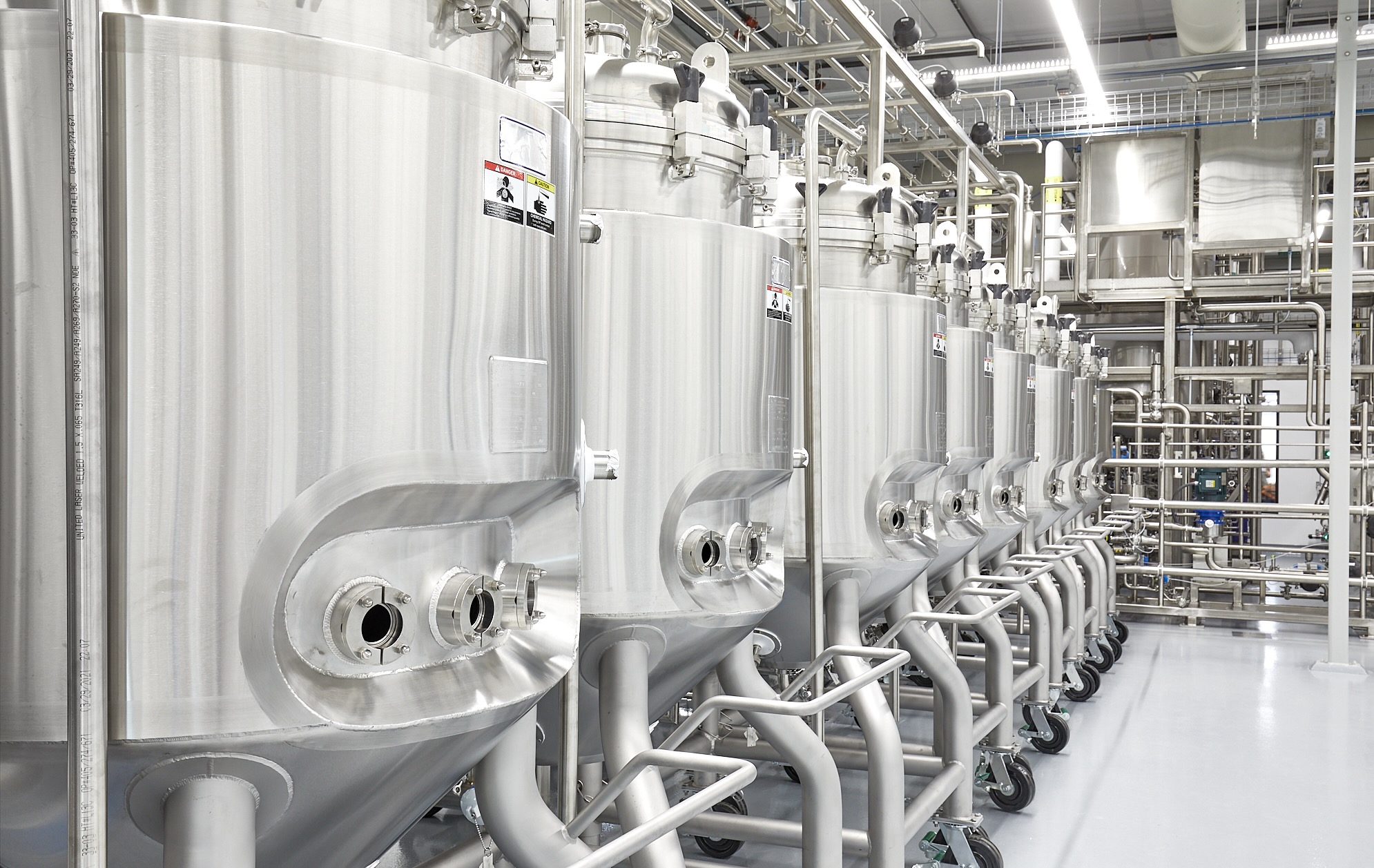Happy Friday, and welcome to the 85th edition of Food Fix! I’m glad you’re here. If you’re not yet a paid subscriber, you missed my piece earlier this week on why it’s a big deal the feds finally landed on a name for cell-cultivated meat, plus insights on how key lawmakers are thinking about nutrition in the Supplemental Nutrition Assistance Program or SNAP.
Upgrade your subscription today to avoid missing out again.
Food Fix off next week: The newsletter will be on break next week – I’m in the Netherlands for AgriVision. If you’re attending, or you’re in the area, get in touch! We’ll be back in your inboxes the first week of July.
As always, I love your feedback. Reply to this email to land in my inbox or shoot me a note: helena@foodfix.co.
Alright, let’s get to it –
Helena
***
Today, in Food Fix:
– Why cell-cultivated meat is here – and also still years away
– Low-income households are spending less on food
***
Futuristic meat is here – or is it?
The government this week greenlit cell-cultivated meat – a historic move that puts the U.S. at the forefront of this technology, behind only Singapore, where it was approved in 2020.
Both UPSIDE Foods and GOOD Meat were approved this week for what’s known as a Grant of Inspection from USDA, meaning their plants can be federally inspected just like any other meat plant (minus the animal slaughter, of course).
This is big news – and it’s been a fascinating food-policy story to follow. This novel technology essentially had to forge a new regulatory path where one didn’t exist. Back in 2018, I wrote about a contentious turf battle between FDA and USDA over which agency would get primary jurisdiction – in a hard-fought compromise, the agencies ultimately agreed to share.
The fact that we went from a raging regulatory turf fight to full-on approval by both FDA and USDA in just five years is remarkably fast. (By comparison, it took two decades for genetically-engineered salmon to move through the regulatory system.)
Smooth sailing: Even if you wouldn’t consider this timeline fast, per se, it was relatively smooth. I’ve written a lot about how the FDA takes a very long time to do anything – even on pressing health and food safety issues. But cell-cultivated meat really is an exception. I routinely hear folks in this sector praise FDA, not necessarily because the agency was a cake walk to deal with, but because agency staff were responsive, asked good questions – and company leaders felt like the process was moving, even if slow by Silicon Valley standards (the tech hub’s mantra of move fast and break things doesn’t work so well for food safety.)
A divided plant: When visiting UPSIDE Foods’ plant last year, I was struck by how the layout was basically a manifestation of the FDA and USDA’s agreement to share jurisdiction. The FDA side grows the cells (see tanks pictured above) and then the USDA side processes it (and the air is quite cold, just like any other meat plant) – the tissue passes through a special door to hand off jurisdiction. They even had a sign to mark their future USDA inspectors’ designated parking spot.
Can this make it to market? While the greenlight from the feds is a big deal, key industry leaders have been clear that the lack of regulatory approval is not the limiting factor. There are still serious logistical and financial challenges to scaling production enough to supply a single grocery store, forget the whole grocery retail machine, which operates at incredible scale.
In Tuesday’s edition of Food Fix – which also covered why it’s so momentous we’ve finally settled on a name for cell-cultivated meat – I cited a recent piece by Larissa Zimberoff in Fast Company about why we won’t be eating these products anytime soon.
“I think it’s going to be five to ten years before this is actually a reality,” Zimberoff told me this week. (This reality check, by the way, comes from the journalist who covers this food-tech space closer than just about anyone. Zimberoff recently wrote a book about food tech, too – if you go sign up for her newsletter you’ll be entered to win a free copy!)
Josh Tetrick, CEO of Eat Just, the parent company of GOOD Meat, told Zimberoff, “the whole world could approve cultivated meat everywhere and that wouldn’t change or enable us to sell one additional pound in 2023. The biggest limiting step is scale.”
Why is scale hard? I talked to UPSIDE Foods Chief Operating Officer Amy Chen this week to drill down into the challenge. Why is it so hard to scale production?
Chen told me this industry is essentially creating a new and complex supply chain to make feed for the animal cells. Since cells don’t have the digestive systems that whole animals have, the elements of this feed have to be broken down in a specialized way (think: amino acids) – it’s actually not too different from some highly-specialized infant formulas.
“You are what you eat – that is true of cells as well, they become what they eat,” Chen said. “The most important determinative input is basically the media, the cell feed, it’s also the most expensive part of it.”
As they work toward scale, access to affordable feed will be key. Though some of the dozens of components needed are easy to come by, Chen said others are very limited. The process of growing cells also requires a certain level of purity, which comes with a cost. Part of the reason why conventional meat production in the U.S. is so incredibly efficient – aside from hundreds of years of perfecting animal genetics – is the availability of abundant and affordable animal feed, whether it be forage, corn, soy or byproducts.
A drop in the bucket: These companies must now figure out how to economically feed their specialized cells at scale. They’ll also have to build this complex supply chain from scratch, and they are starting out quite small. GOOD Meat says it has sold a total of 5,000 pounds of meat in Singapore so far – that’s about the weight of one Ford F-150 truck.
UPSIDE Foods’ Bay Area facility can produce about 50,000 pounds annually. Chen said they have surpassed that capacity with testing and R&D. Still, it’s important to put this in context: The U.S. produced nearly 60 billion pounds of chicken in 2020.
There’s plenty of skepticism – is any of this even possible or economical at scale? – and venture capital is no longer as easy to come by. It could take years before the verdict is in.
Exclusive taste: In the meantime, if you want to try cell-cultivated chicken, you can enter a contest to be among the first consumers to try it at Bar Crenn in San Francisco, a swanky restaurant by Michelin-star chef Dominique Crenn, probably in a month or two. Chen told me they’ll add more restaurants in the coming months, so it’s possible you can find a taste. José Andrés is also expected to roll out chicken from GOOD Meat at one of his DC restaurants. (DCist reports it will be China Chilcano). Details TBD, but I’ll share when I have them.
Taste test: Have you tried cell-cultivated meat? If so, drop me a note. I’d love to hear your thoughts!
***
Low-income households are spending less on food
After the government ended enhanced pandemic food-aid payments earlier this year, lower income households are pulling back on grocery spending, according to a new report released today by Morning Consult.
Readers of this newsletter may recall that the stepped up SNAP benefits ended a couple months earlier than they otherwise would have as part of a deal to permanently extend Summer EBT benefits for schoolchildren – a new program that gives families grocery benefits to replace school meals missed during the summer. And this was no small thing – it’s one of the only major expansions of pandemic food aid that will continue. The deal essentially took the savings from ending the benefits early to pay for the new program – it’s a Washington math thing.
The new analysis from Morning Consult shows a divergence in grocery spending trends for high and low income consumers in the wake of this benefits cliff. This chart helped me understand what’s going on:
Spending is down, but the analysis also found that an increasing portion of low-income families are turning to SNAP benefits – this tracks with a recent piece I wrote about how SNAP participation is almost back to its pandemic peak.
In May, 47 percent of households earning less than $50,000 per year reported receiving SNAP benefits – up from 39 percent in February, per the analysis.
“Asked about their cost-saving measures, low-income consumers were the cohort most likely to eat less food,” the report said.
***
What I’m reading
Are lawmakers seeking healthy limits on junk food or acting as food police? (Wall Street Journal). “In a push to boost the country’s health, some lawmakers want to prevent people from buying soda or junk food with federal benefits, but opponents say Congress shouldn’t be policing what Americans eat,” writes Kristina Peterson. “Much of the food industry is lobbying against measures that could suppress sales of their products. Anti-hunger advocacy groups and trade associations representing packaged foods, beverages and grocers, among others, urged lawmakers to maintain ‘the ability of individuals to choose the groceries they feel are best for their families rather than items decided by the government,’ in a letter sent to Agriculture Committee and congressional leaders this month.”
People on drugs like Ozempic say their ‘food noise’ has disappeared (New York Times). “Dr. Andrew Kraftson, a clinical associate professor at Michigan Medicine, said that over his 13 years as an obesity medicine specialist, people he treated would often say they couldn’t stop thinking about food. So when he started prescribing Wegovy and Ozempic, a diabetes medication that contains the same compound, and patients began to use the term food noise, saying it had disappeared, he knew exactly what they meant,” writes Dani Blum. “As interest has intensified around Ozempic and other injectable diabetes medications like Mounjaro, which works in similar ways, that term has gained traction. Videos related to the subject ‘food noise explained’ have been viewed 1.8 billion times on TikTok.”
Bidens to greet India’s Modi with lotus blooms, but no Gujarati food (Reuters). I’m a sucker for a food-meets-diplomacy dispatch. “President Joe Biden and first lady Jill Biden will welcome Indian Prime Minister Narendra Modi to a White House decorated with peacocks and lotus blooms on Thursday, hosting a vegetarian dinner but no specialties from Modi’s home state of Gujarat,” report Jeff Mason and Nandita Bose. “Modi, a strict Hindu who follows a vegetarian diet, will be served a first course that includes a grilled corn kernel salad and tangy avocado sauce, the White House said. The main course will include portobello mushrooms and creamy saffron-infused risotto, with rose and cardamom-infused strawberry shortcake featured for dessert. With the slightly Indian-accented dinner, the Bidens are following a White House tradition of serving guests from abroad food that has faint echos of home with a strong American bent.”
***
Work in the food space? Comp your Food Fix sub!
Become a paid subscriber to unlock access to two newsletters each week, packed with insights and analysis on food happenings in Washington and beyond. If you work in the food world, your company or organization should comp your subscription, just like they might pay for the Wall Street Journal or New York Times. Yes, really – it doesn’t hurt to ask!
Sign up for the Friday newsletter: If someone forwarded you this email, get the free Friday edition yourself.
Food Fix is on break next week – we’ll be back in your inboxes first week of July!

